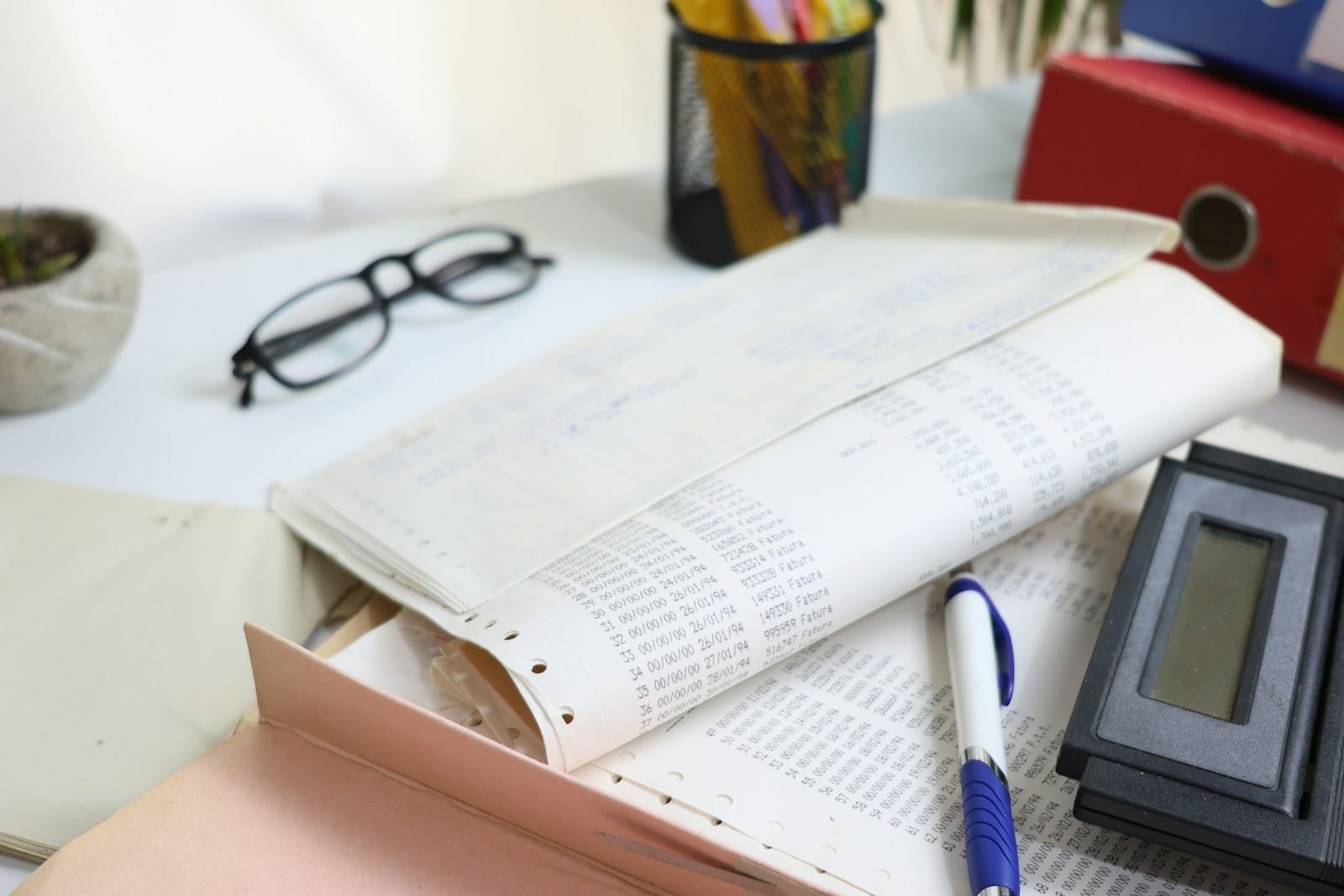Please Note: This post may contain affiliate links. If you click one of them, we may receive a commission at no extra cost to you. As an Amazon Associate, I earn from qualifying purchases.
When you’re gearing up for a court battle, documenting your losses is like preparing for a big game. You wouldn’t show up without your lucky socks or that secret playbook, right?
Similarly, having solid documentation can make all the difference in proving your case and maximizing your compensation. So let’s dive into how to effectively document those losses—without getting lost in a sea of paperwork!

Top Takeaways and Key Concepts
Identify Claimable Losses: Track economic losses like medical bills and lost wages, and non-economic losses like emotional distress.
Document Immediately: Record incident details, dates, times, and locations while memory is fresh.
Collect Supporting Evidence: Gather photos, witness statements, and other tangible proof to strengthen your case.
Track Financial Impacts: Maintain accurate records of expenses and lost income related to the incident.
Organize and Consult: Neatly organize documents, make copies, and consult your attorney for guidance.
Summary of This Article
The article emphasizes the importance of meticulously documenting losses for legal proceedings to maximize compensation. It outlines both economic and non-economic losses, stressing immediate record-keeping and gathering supporting evidence like photos and witness statements. Tracking financial impacts, including medical expenses and lost wages, is critical. Non-economic damages such as emotional distress should also be documented through personal accounts. Finally, organizing all materials neatly and consulting an attorney ensures preparedness for trial and strengthens your overall case.
Understand What Losses You Can Claim

First off, let’s clarify what types of losses you can actually claim. Not all sad stories qualify for compensation; it’s important to know where the money might come from. Generally speaking, there are two main categories: economic and non-economic losses.
Economic losses include things like medical expenses, lost wages, and property damage. For instance, if you slipped on a banana peel at work (a classic scenario), you’d want to keep track of every doctor visit and prescription cost—because they add up faster than my grocery bill after a late-night snack run!
On the other hand, non-economic losses cover things like pain and suffering or emotional distress. While these may not come with receipts, they’re still essential when making your case.
Start Keeping Records Immediately

As soon as an incident occurs—whether it’s an accident or another event that causes loss—you should start documenting everything. I mean everything! Think of yourself as a legal detective on a mission. Write down what happened while it’s fresh in your mind; details fade faster than leftovers left out too long at a party.
Keep a journal or use an app to note dates, times, locations, and specific events surrounding the incident. Did you have to miss that family barbecue because you were stuck at physical therapy? Jot it down! This kind of detail can help paint a picture later on about how the incident affected your life.
Gather Evidence Like Sherlock Holmes
Now that you’re writing everything down like it’s hot gossip from the neighborhood block party, it’s time to gather evidence. Photos are worth more than just words—they’re practically gold! Snap pictures of injuries (if applicable), property damage, or even locations relevant to your case.
By the way, don’t forget about witness statements! If someone saw you dramatically fall over that rogue banana peel (which we now realize was part of some elaborate fruit conspiracy), ask them if they’d be willing to provide their account in writing. The more corroborating evidence you have, the stronger your case will be!
Keep Track of Financial Impacts
Next up: tracking those financial impacts meticulously. I remember one time my buddy tried claiming he lost money because his cat knocked over his laptop during an intense gaming session—while amusingly tragic—it didn’t fly in court! However, legitimate claims require accurate calculations.
Create spreadsheets detailing all related expenses such as medical bills and any repairs needed due to damages incurred from the incident. Additionally, if you’ve missed work days due to recovery or treatment plans, record how much income you’ve lost during this time so nothing slips through the cracks—and trust me; those dollars add up quickly!
Document Emotional Distress
Let’s see… when it comes to non-economic damages like emotional distress or pain and suffering? Well now we enter murky waters since emotions don’t exactly come with price tags attached! But fear not; there’s still hope!
Consider maintaining an emotional diary where you express feelings regarding changes brought upon by this unfortunate event—like missing out on fun activities with friends because you’re recovering from surgery.
These personal accounts help convey how deeply affected you’ve been by circumstances beyond your control—a must-have for jury sympathy points!
Organize Everything Neatly
Once you’ve amassed mountains of documents—including receipts galore—it’s crucial to organize them neatly before heading into court proceedings (or risk being labeled “that person” who shows up with papers flying everywhere).
Use folders labeled according to categories: medical records here; financial impacts there; photos somewhere else entirely so things remain easy-peasy lemon squeezy!
Honestly speaking though—make copies! Not only do originals belong safely tucked away but having duplicates ensures no one gets caught empty-handed should something go awry during trial day chaos.
Consult With Your Attorney
All things considered; consulting with your attorney throughout this process is vital—not just optional advice tossed around casually like confetti at New Year’s Eve parties! They’ll guide which documents hold weight based on jurisdictional requirements while helping ensure nothing critical gets overlooked along this documentation journey.
Speaking of which—don’t hesitate asking questions about what else might strengthen claims further before entering courtroom drama territory together!
Prepare for Trial Day
Finally—the moment arrives: trial day! Be prepared mentally by reviewing notes beforehand so nerves don’t take over when called upon during testimony sessions (trust me—I once forgot my own name under pressure!).
Bring organized materials ensuring smooth sailing through questioning periods while presenting well-documented evidence supporting claims made earlier throughout proceedings.
Remember: confidence goes hand-in-hand with preparedness! Now go forth knowing that diligent documentation will serve as armor against opposing forces trying undermining valid arguments presented within legal battles ahead!
Suggested External Resources:
Understanding Damages – Types and How to Calculate Them
https://www.nolo.com/legal-encyclopedia/understanding-damages-types-how-calculate-them.html
How To Document Your Personal Injury Case
https://www.lawyers.com/legal-info/research/how-to-document-your-personal-injury-case.html
The Importance of Documentation in Personal Injury Cases
https://www.millerandzois.com/blog/documentation-personal-injury-cases/
Frequently Asked Questions
What types of losses can I document for court?
You can document both economic losses, such as medical bills, property damage, and lost wages, and non-economic losses like pain, suffering, or emotional distress.
When should I start documenting my losses?
Begin documenting immediately after the incident while details are fresh. Record dates, times, and key events to ensure accuracy and credibility in court.
What evidence should I gather to support my claim?
Collect photos, receipts, witness statements, medical reports, and any documents that help demonstrate the extent of your losses and their direct connection to the incident.
How can I track financial impacts effectively?
Use spreadsheets or logs to record all related expenses, repair costs, and income losses. Keep receipts and invoices as proof of every financial impact.
Can I document emotional distress for court?
Yes. Maintain a personal journal describing your emotional and psychological struggles following the incident to help support non-economic damage claims.
What’s the best way to organize my documentation?
Store records in labeled folders—physical or digital—and make copies of key documents. Categorize by type, such as medical, financial, or photographic evidence.
Why should I consult an attorney during documentation?
An attorney can help you identify essential documents, ensure compliance with court requirements, and strengthen your overall claim strategy.

Kevin Collier is a legal expert passionate about simplifying complex legal concepts for everyday individuals. With a focus on providing clear, practical information, he covers a wide range of topics, including rights, responsibilities, and legal procedures. Kevin aims to empower readers with the knowledge they need to navigate the legal landscape confidently, ensuring they can make informed decisions regarding their legal matters. Through insightful articles and easy-to-understand resources, he helps demystify the law, making it accessible to all.










